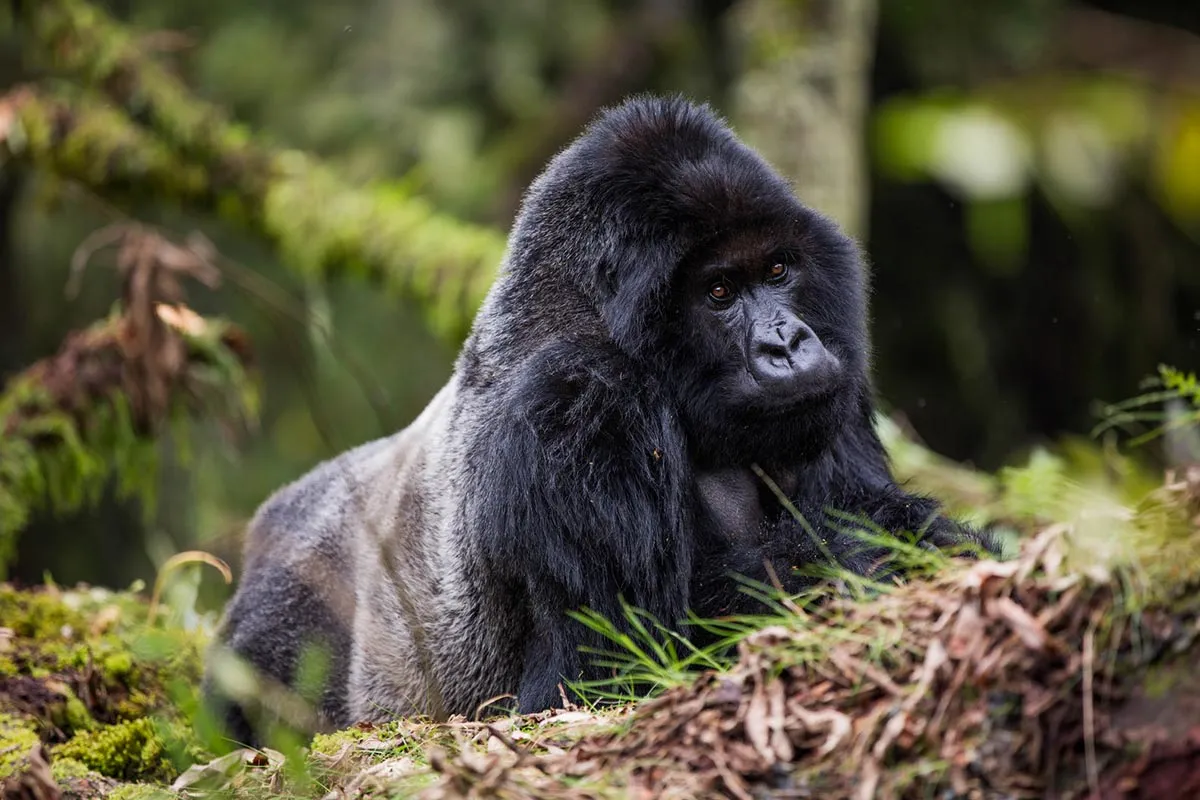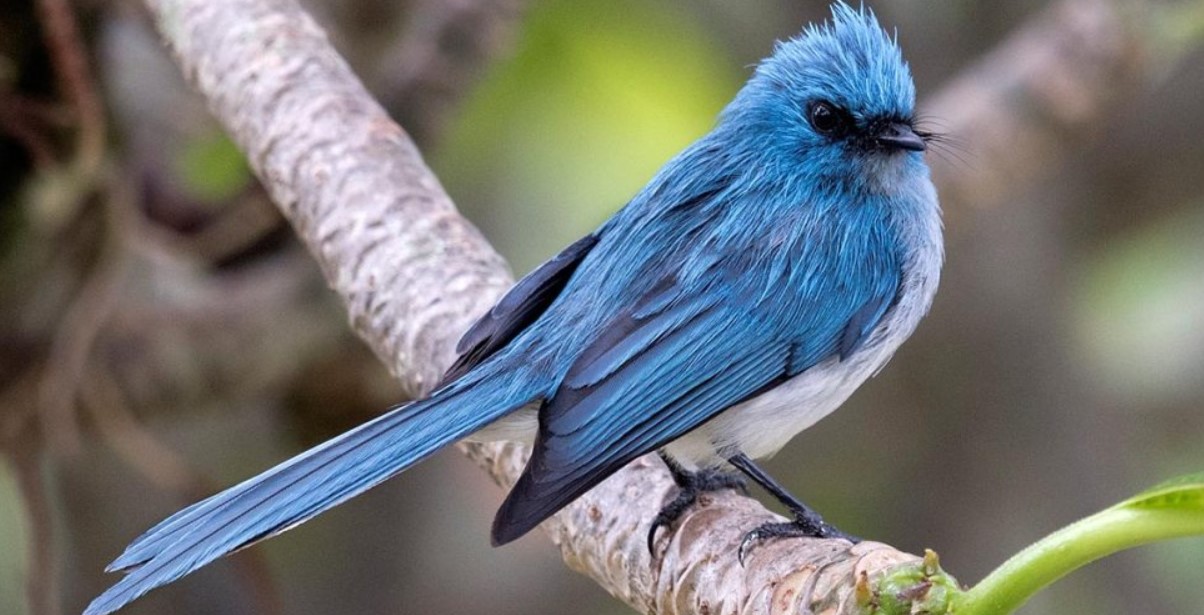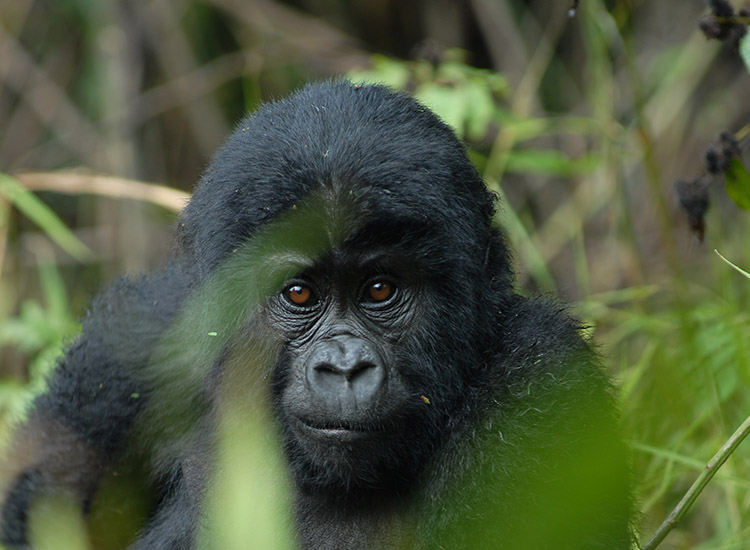What is Queen Elizabeth National Park famous for? Queen Elizabeth National Park it is located…

How Many Days Do You Need For A Gorilla Trek Safari In Rwanda?
How Many Days Do You Need For A Gorilla Trek Safari In Rwanda? How many days are ideal for the perfect gorilla trekking experience in Rwanda? Would you like to know how many days are required for gorilla trekking in Rwanda’s Volcanoes National Park? We will address gorilla trekking in Rwanda and respond to your query in this post blog. The length of time needed for a gorilla trek in Rwanda varies depending on a few things, such as the trip package you select; however, three days is the most typical.
A gorilla safari in Rwanda usually lasts at least three days, including travel to Volcanoes National Park on the first day, trekking on the second, and depart from Rwanda in the third day.
HOW MANY DAYS ARE NEEDED FOR A GORILLA TREKKING SAFARI IN RWANDA?
A Rwandan gorilla hike takes at least two days, while three days is the ideal amount of time. Keep in mind that the Rwanda Tourism Board only prints 86 permits every day, so making reservations far in advance of your trip is crucial. Following the purchase of your permit, you can anticipate tracking gorilla families in Volcanoes National Park, such as the 13-member Hirwa family, the 8-member Sabinyo family, the 11-member Umubano family, and the 17-member Amahoro family.
Three days of gorilla trekking in Rwanda
Kigali, the capital of Rwanda, is the starting and finishing point of the three-day gorilla trekking expedition. A permit for the safari is included, and it costs $1,500 per person. The safari’s brief schedule consists of the following:
- Day 1: Arrival in Rwanda—a drive to Volcanoes National Park
- Day 2: Gorilla trekking exercise
- Day 3: Departure to Kigali
Day 1: Arrival in Rwanda—a drive to Volcanoes National Park
After giving you a briefing on the specifics of your itinerary and what to expect over the next three days upon your arrival in Kigali, your driver guide will take you to Volcanoes National Park (Parc des Nationals), which is around 80 kilometers and two hours’ drive from Kigali. If you get to Kigali early, you can do a quick tour of the city, visit the museum or the Kigali Genocide Memorial Center, and then go to the volcanoes.
On the first day, there are several lodging alternatives, including the premium Volcanoes Lodge, the mid-range Le Bamboo Lodge, and the inexpensive Muhabura Hotel.
Day 2: Gorilla trekking
Day 2 of gorilla trekking in Volcanoes National Park begins with an early breakfast at your accommodations. Your driving guide will then transport you to the park headquarters, where knowledgeable guides will give you a briefing on the rules and what to expect. You will be paired with a gorilla family to hike during the briefing, and then the trek and gorilla search will begin.
Depending on where your designated gorilla family is located, the hike can take anywhere from one to six hours. Once you’ve found them, each group gets to spend an hour with the gorillas, watching them eat, tend to their young, and go about their daily lives. Other wildlife that you might see on the journey includes forest elephants, buffalo, several bird species, and primates like olive baboons, black and white colobus monkeys, and golden monkeys. Before returning to the lodge, you also get to see the twin lakes of Ruhondo and Burera and the surrounding towns.
Accommodation options: On the second day, we have Volcanoes Lodge, which is a luxury option; Le Bamboo, which is a mid-range option; and Muhabura Lodge, which is a reasonably priced alternative.
Day 3: Departure to Kigali
Day 3 is the last day of the gorilla hike safari. If you do not have any additional safaris scheduled to other parts of Rwanda, it is time to check out and return to Kigali after an early breakfast at the lodge.
The standard three-day safari package includes gorilla permits, lodging (full board), all safari activities, drinking water, transportation, and an experienced English-speaking guide. International airfares, gratuities, upscale drinks, additional activities, laundry services, and additional days spent are not included in the trip.
You can do other things at Volcanoes National Park than gorilla trekking, such as bird watching, guided primate walks, cultural tours, taking part in the Kwita Izina ceremony, and other things you choose.
COST OF A GORILLA TREK IN RWANDA
Rwandan gorilla trekking is more expensive than that of Uganda and the Democratic Republic of the Congo due to the higher permission fees. Rwanda is regarded as a premium safari destination in its own right. The price of the permit, the number of days, the season, the number of people going in a group, and the kind of lodging are some of the variables that influence the cost of the safari.
For foreign visitors, the gorilla permit costs $1500; for nationals of Rwanda and East Africa, it costs $200; and for citizens of other African nations, it costs $500 per person. it costs $400 in the Democratic Republic of the Congo and $7000 for foreign non-residents. During the off-season, Rwanda offers a 30% reduction on permits, bringing the total to $1050. This is only applicable if you have scheduled a safari to either Nyungwe or Akagera National Park following your gorilla walk.
The length of time spent on a gorilla hike influences the safari’s price as well. The price of a gorilla safari increases with the number of days you spend on it and decreases with the number of days you spend on it. Because transportation expenses are split among the group of travelers and a private gorilla safari is more costly, traveling in groups lowers the cost of the safari.
The kind of lodging selected has a significant impact on the safari’s price. If you are traveling on a tight budget, we suggest that you choose accommodations that are either affordable or mid-range and that meet your budget; if you are searching for a lavish safari, reserve the most opulent lodging.
The season of travel: While visiting during the dry season is ideal, many service providers raise their rates because of the high number of visitors, making the safari pricey. In contrast, safaris during the wet season are less expensive.
GORILLA TREK RULES AND REGULATIONS
Due to persistent poaching by people, mountain gorillas are an endangered species that nearly went extinct. However, Dian Fossey’s contributions and conservation ideas helped the gorillas survive. Certain regulations have been put in place to continue protecting the mountain gorillas’ natural environment with assistance from the Rwandan government. For your protection as well as the safety of the gorillas, everyone planning a gorilla trip must abide by the following rules:
- The minimum age requirement to trek with gorillas in Rwanda is 15 years old; anybody under that age cannot go to this activity.

Gorilla trekking in Volcanoes - It is forbidden to feed the mountain gorillas.
- Trekkers are allotted a maximum of one hour to spend with the gorillas after finding them, during which time they can take pictures and movies and observe their behavioral patterns.
- The gorillas should be kept at least 7 to 10 meters away from you.
- Make sure to turn down your camera’s flash before shooting pictures because gorillas aren’t used to it.
- Trekking with the designated gorilla families is limited to a maximum of 8 individuals.
- Since there are no restrooms inside the national park, hikers who intend to use the restroom should dig and cover holes that are 30 cm deep.
- Leave the national park as you found it to prevent leaving trash behind.
- Avoid getting near the gorillas in any way to prevent spreading any illnesses you may have.
- If the gorillas approach you, obey the instructors’ recommendations and refrain from staring them in the eye. You should also avoid wearing sunglasses.
WHAT TO PACK FOR A GORILLA TREK SAFARI IN RWANDA?
- The packing list for gorilla trekking in Rwanda is provided below. When packing, keep in mind that you should pack light and effectively.
- For times when the weather suddenly changes, bring along some warm clothing, such as sweaters.
- Whether you are going during the dry or wet season, you must have a raincoat.
- Long-sleeved shirts and pants keep you warm, shield your skin from tree scratches, and keep insects away from your skin. Packing neutral or brown, khaki, and green outfits is a good idea. Steer clear of black, blue, and any other vividly colored clothing. Don’t forget to stay away from jeans.
- A first aid box that is completely stocked with all of the prescription medications your doctor has ordered, bandages, spirit, iodine, cotton, pain relievers for stomachaches, and other items needed to treat cuts sustained during the hike.
- Socks, gardening gloves, and gaiters are required. In addition to keeping you warm on the hike, the socks are tucked inside your pants to prevent insects from getting inside them. During the hike, your hands are shielded from tree scratches by the garden gloves and non-surgical gloves; the adjustable gaiters are primarily worn in the rainy season.
- Sturdy ankle-length boots are essential for maintaining your footing on the hike, especially in the rainy season. If possible, they should fit properly to prevent blisters and be waterproof.
- Along with them, you should bring along a sun hat, sunscreen, insect repellent, reusable water bottle, flashlight, spare batteries, camera, extra lenses, binoculars, wet wipes, biodegradable toilet paper, a scarf, sandals, and toiletries.
In addition to Rwanda, gorilla trekking is also conducted in Uganda and the Democratic Republic of the Congo. There are two gorilla destinations in Uganda: Bwindi Impenetrable National Park, home to half of the world’s gorilla population, and Mgahinga National Park, home to one habituated gorilla family. Virunga National Park is the location of gorilla trekking in the Democratic Republic of the Congo; however, due to ongoing conflict in the nation, trekking is not currently safe.
THE BEST TIME FOR GORILLA TREKKING IN RWANDA
In Rwanda, the months of June, July, August, September, December, January, and February are the finest times to go gorilla trekking. Because of the easy access to the trip routes and the thinning of the foliage, the dry months are seen as the best times to walk through the forest. Keep in mind that even during the dry season, rain is a real possibility in this tropical rainforest. On the other hand, if you don’t mind the rain showers and the muddy and slippery terrain, the rainy season is also a fantastic time for a gorilla hike. There are fewer people throughout the wet months of March, April, May, October, and November than during the dry season, which is the nicest thing about going gorilla trekking during these months.
CONCLUSION:
Due to the strong demand for gorilla permits and the ease of preparation, reservations for the gorilla safari must be made well in advance. Depending on your budget, get in touch with us to help you plan your whole Rwandan safari itinerary and obtain the necessary permits. In addition, our online staff is available to respond to any inquiries you may have regarding the safari and other safari destinations in Rwanda.



